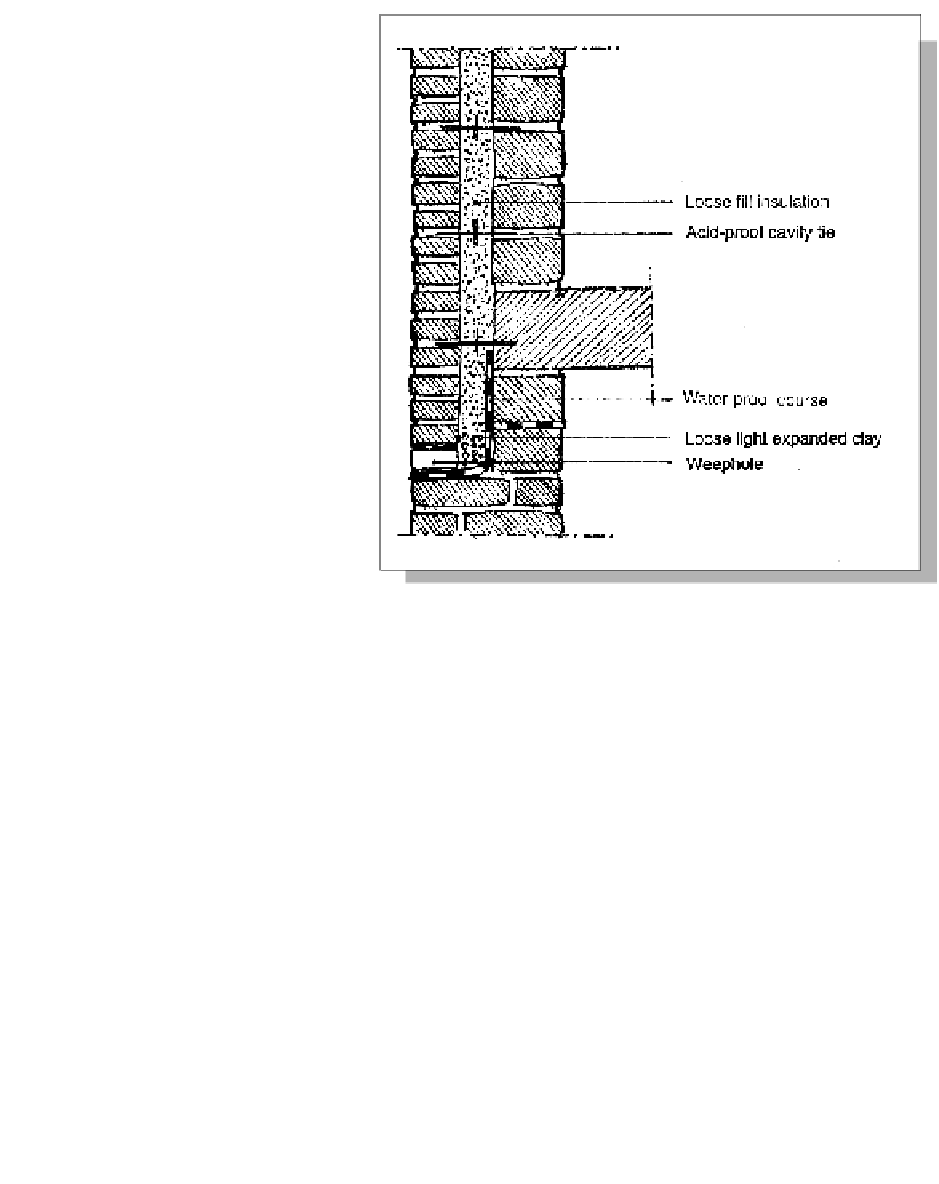Civil Engineering Reference
In-Depth Information
a moisture preventative is added
to the mix before it is poured into
the wall. Perlite mixed with silicon
(about 1 per cent by weight) at
400°C is called Hyperlite. Bitumen
can also be added in a proportion
of about 15 per cent.
Using perlite as an aggregate in
render and mortars can achieve an
increase in the thermal insulation
of a wall. For example, 15 mm per-
lite render is the equivalent of a
whole brick wall thickness or
240 mm concrete. In this case the
perlite is not impregnated.
Lightweight concrete blocks
with perlite can be produced in
many different mix proportions.
When perlite is exposed to even
higher temperatures naturally, it
expands and becomes a porous
and monolithic rock called
pumice. The pores in this stone are
not connected, so the material does not absorb any water. Building blocks of
pumice in combination with cement have almost the same properties as light
expanded clay blocks.
Pumice occurs naturally and in large quantities in Iceland.
Perlite reserves are large. The only pollution risk related to perlite is possible
irritation from exposure to its dust. The use of bitumen and silicon additives rais-
es the question of oil extraction and refining in the environmental profile. Pure
and silicon-treated perlite have no side effects once installed in a building.
Depending upon how the bituminous products are incorporated, small emis-
sions of aromatic hydrocarbons may occur.
As a waste product, bituminous perlite must be disposed of at special depots.
Pure perlite is inert. The siliconized material is also considered inert. Recycling is
possible by vacuuming the loose material out of the structure, compressing it and
re-using it locally.
Figure 14.6: Principle for perlite insulation in cavity walls.
Vermiculite products
Vermiculite is formed through the disintegration of mica, which liberates lime
and takes up water. When vermiculite is heated to 800-1100°C, it divides into

